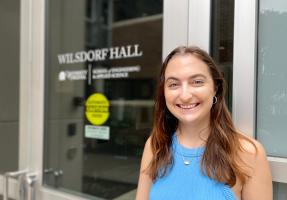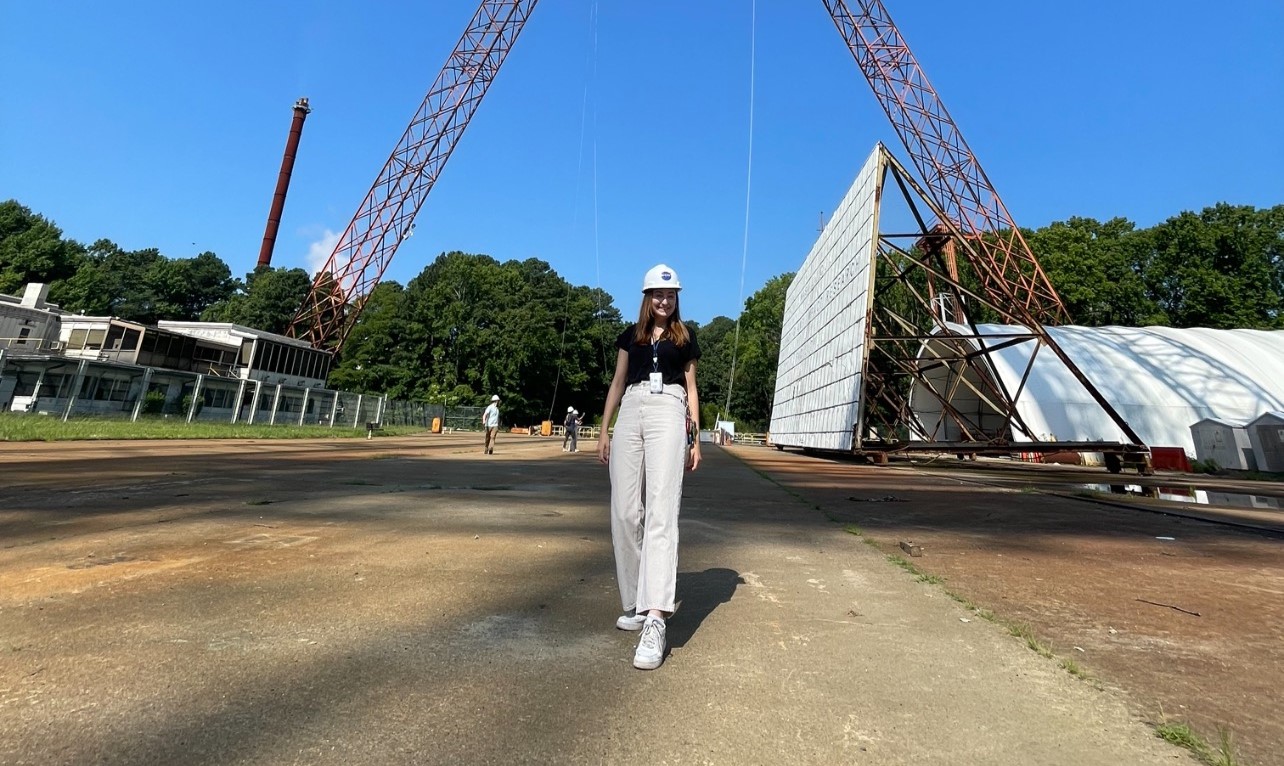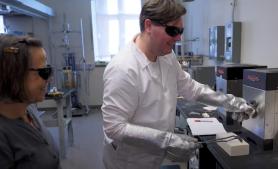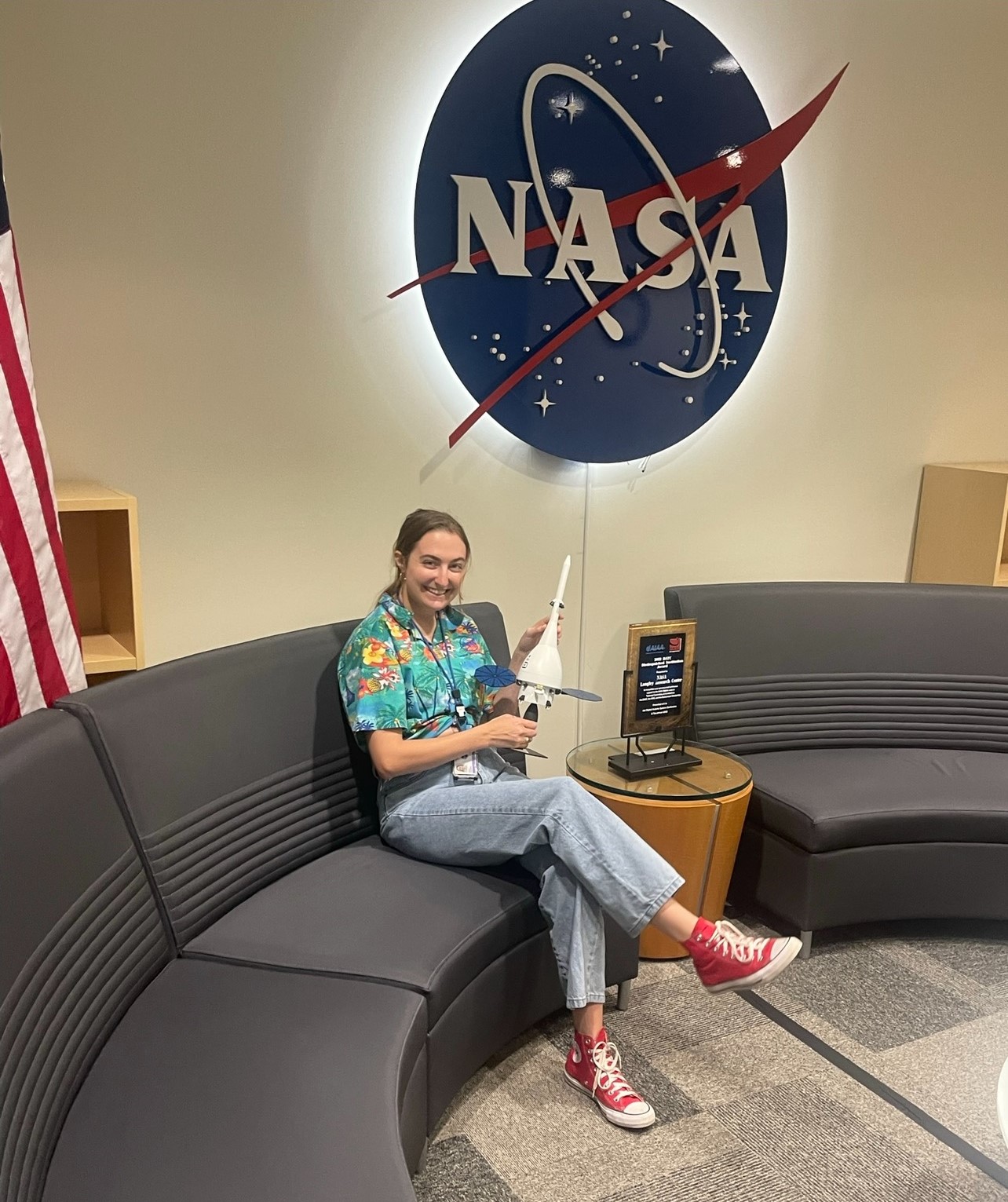
Morgan Small, who graduates this Sunday from the University of Virginia School of Engineering and Applied Science, will be going to work soon for her dream employer, NASA.
Small is a materials science research engineer who will help the air and space agency better define which materials will hold up, and which will break down, when airborne machines operate at hypersonic speeds.
In terms of a career, the Bureau of Labor statistics projects strong growth for materials engineering over the next decade. And while her decision was a practical one, it was also emotional. Small has long been interested in two things: becoming an engineer like her father, and having a career at NASA.
“I spent my childhood near Cape Canaveral, watching the shuttles go up,” she said.
Small is now watching her career take off as one of the first graduates of the Materials Science and Engineering undergraduate program.

A Launchpad With Hot Job Prospects
“Hypersonics” refers to the development of vehicles that will travel at more than five times the speed of sound.
That is, if they’re not overwhelmed by forces acting upon them in flight. Nations and corporations worldwide are racing to figure out what will work best.
In a lab in UVA’s Wilsdorf Hall, Small held up a quartz test tube. The tube had already cooled. Previously it had been heated to 1200 degrees Celsius in a furnace roughly the size of a small microwave turned on its side. The tube contained a compound whose oxidation properties the U.S. Department of Defense has asked the University to tell them more about. Oxidation is a natural process that leads to deterioration of materials, and it can speed up in extreme environments. Understanding how the material might act as part of a coating in heat shielding or within plasma engines could drive new innovations.
“Our box furnaces are very well used and very well loved by the Opila Lab,” Small noted.
The lab is named for professor Elizabeth J. Opila, who oversees the program, chairs the Materials Science Engineering Department and is the director of the Rolls Royce University Technology Center on Advanced Material Systems.
“Morgan worked her way through measuring, quantifying and understanding how these oxides expand and contract upon heating and cooling,” Opila said. “Some early wonky results proved challenging, but she persevered to get high-fidelity results.”
Before academia, Opila was a long-time employee of NASA. Her advances in ceramics engineering moved the entire field of aerospace forward.
I had someone offer me an internship on the spot at a UVA career fair last year...
The accomplished professor’s lab, thus, is a bonanza of equipment and research to be conducted — one reason why Small decided on the materials science focus. There was always something she could do that was both needed and hands-on.
“I and other faculty have plenty of opportunities for undergraduates to get solid lab experience,” Opila said. “The research makes terrific projects for undergraduates to train on.”
In addition to NASA, Small received offers from several other major employers. Their proposals started coming to her in the fall, without her reaching out first in some cases.
“Materials is a booming community right now because there are so many problems that are materials problems,” the student said. “For example, another graduate in my capstone course works with corrosion the most. She now has a job with the Navy to research corrosion on ships to extend their lifetimes.”
And though many other employers, including biomedical developers, are seeking out materials science graduates, Small observed that the aerospace industry, and in particular hypersonics divisions, are leading the charge.
“I had someone offer me an internship on the spot at a UVA career fair last year because I said I was a materials person who worked in hypersonics,” Small said.

